Blog
Synapse Brain & Spine Center

Seasonal Affective Disorder (SAD) and QEEG Brain Mapping: A Data-Driven Approach to Winter Depression Seasonal Affective Disorder (SAD) is a form of depression that follows a seasonal pattern, most commonly appearing during the fall and winter months when daylight exposure decreases. While SAD is often dismissed as “winter blues,” research shows it is a neurologically driven condition involving changes in brain activity, circadian rhythms, and neurotransmitter regulation. At Synapse Brain & Spine Center, we use QEEG brain mapping to objectively identify the brain-based patterns associated with SAD and guide personalized treatment strategies such as neurofeedback and integrative neurology care. What Is Seasonal Affective Disorder? Seasonal Affective Disorder is classified as a recurrent depressive disorder with a seasonal onset. Symptoms typically begin in late fall or early winter and improve in spring or early summer. Common Symptoms of Seasonal Affective Disorder Persistent low mood or depression Fatigue and low energy Brain fog and poor concentration Increased sleep or difficulty waking Carbohydrate cravings and weight gain Reduced motivation and productivity Anxiety or emotional reactivity The Brain Science Behind Seasonal Affective Disorder Reduced sunlight exposure affects the brain in several measurable ways: Disrupted circadian rhythm (melatonin and cortisol imbalance) Reduced serotonin signaling, impacting mood regulation Altered frontal lobe activity, affecting motivation and executive function Increased limbic system activation, contributing to anxiety and emotional instability These changes are not subjective—they can be measured using QEEG brain mapping. What Is QEEG Brain Mapping? Quantitative Electroencephalography (QEEG) is a non-invasive test that measures electrical activity in the brain. It evaluates how different regions communicate and compares results to age-matched normative databases. Unlike MRI or CT scans that look at structure, QEEG assesses brain function. What QEEG Measures: Brainwave speed (delta, theta, alpha, beta, high beta) Regional overactivity or underactivity Functional connectivity between brain regions Patterns associated with depression, anxiety, ADHD, and cognitive fatigue QEEG Patterns Commonly Seen in Seasonal Affective Disorder Patients with SAD often demonstrate consistent findings on QEEG, including: Frontal lobe underactivation Linked to depression, low motivation, and apathy Excess slow-wave activity (theta/alpha) Associated with fatigue, brain fog, and slowed processing speed Frontal–limbic dysregulation Contributes to mood instability and anxiety Left–right hemispheric asymmetries Frequently observed in depressive disorders These findings help explain why many individuals with SAD feel “stuck,” unmotivated, or mentally drained during winter months. Why QEEG Matters for Treating Seasonal Affective Disorder Traditional SAD treatments—such as light therapy or antidepressants—can be helpful, but they often rely on trial and error. QEEG allows treatment to be personalized and data-driven. Benefits of QEEG-Guided Care for SAD: Identifies the root neurological drivers of symptoms Guides QEEG-based neurofeedback protocols Reduces guesswork in treatment planning Objectively tracks progress over time Supports patients who do not tolerate medications well Integrative Treatment Options for SAD at Synapse Brain & Spine Center Using QEEG findings, care plans may include: QEEG-guided neurofeedback to retrain dysregulated brain networks Hyperbaric Oxygen Therapy (HBOT) to support cerebral metabolism and neuroplasticity Targeted light and photobiomodulation strategies Circadian rhythm and lifestyle optimizations This integrative approach addresses both brain function and physiological resilience, helping patients feel more stable, energized, and focused throughout the winter. Seasonal Affective Disorder Is Real—and Measurable. Seasonal Affective Disorder is not simply a mood issue or lack of motivation. It is a biologically measurable brain-state change that can be identified and treated with modern functional neurology tools. QEEG brain mapping provides: Objective validation of symptoms Insight into why winter affects your mood and energy A roadmap for personalized, effective treatment If you experience recurring winter depression, fatigue, or cognitive decline, a deeper look at brain function may be the missing piece.
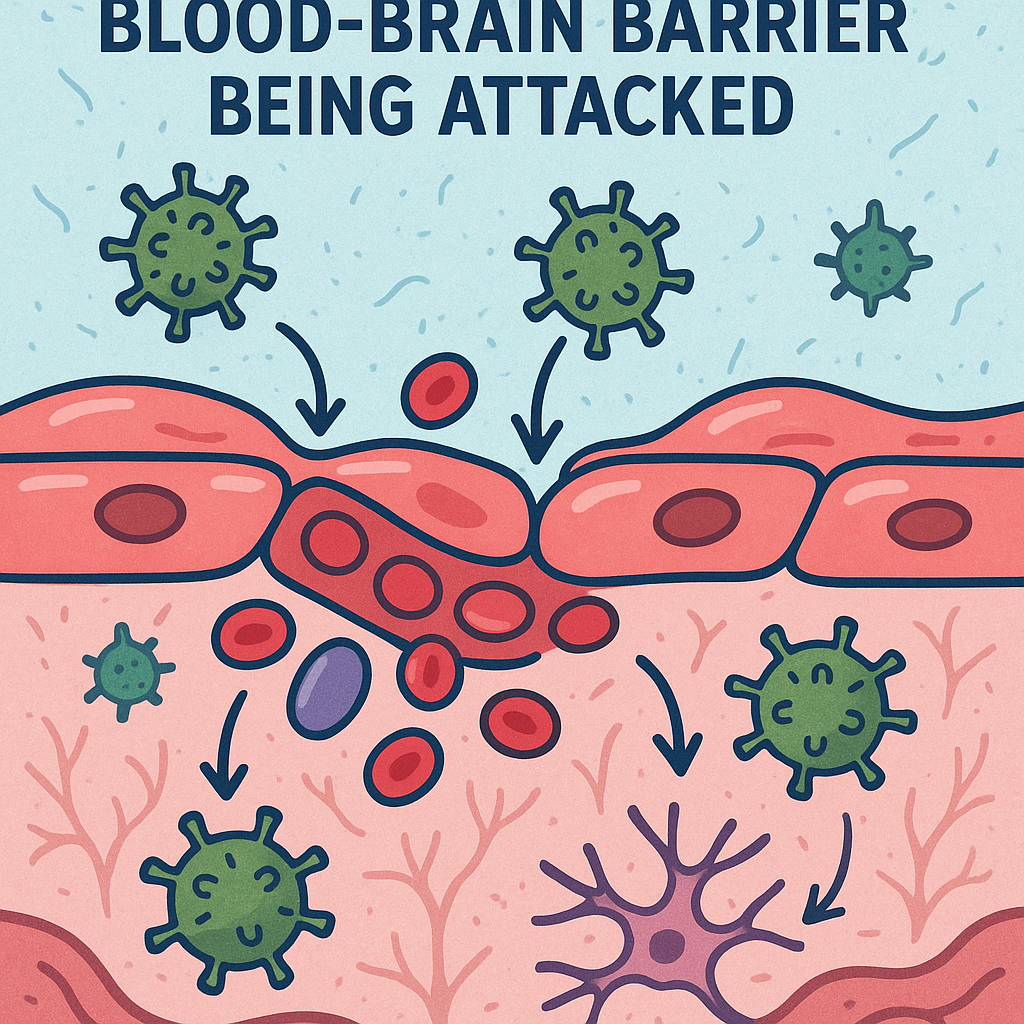
Why You Should Get Your Blood–Brain Barrier Integrity Checked with the Vibrant Wellness Neural Zoomer Discover why testing your blood–brain barrier integrity with the Vibrant Wellness Neural Zoomer is essential for identifying neuroinflammation, brain fog, and cognitive decline. Learn how Synapse Brain & Spine Center in Lewes, Delaware helps restore brain health naturally. 🧠 Understanding the Blood–Brain Barrier: Your Brain’s Most Important Defense The blood–brain barrier (BBB) is a vital, semi-permeable membrane that separates your brain from your bloodstream. Its job is to protect delicate brain tissue from toxins, pathogens, and inflammatory molecules — allowing only essential nutrients and oxygen to pass through. When functioning properly, the BBB acts like an intelligent security gate. But when that gate becomes leaky or inflamed — sometimes called a “leaky brain” — harmful substances can cross into brain tissue and trigger neuroinflammation, immune activation, and even autoimmune reactivity. At Synapse Brain & Spine Center in Lewes, Delaware, we use advanced diagnostics like the Vibrant Wellness Neural Zoomer to evaluate whether your blood–brain barrier is compromised — a critical step in understanding root-cause neurological symptoms such as fatigue, anxiety, or cognitive decline. 🚨 Signs Your Blood–Brain Barrier May Be Compromised If your BBB integrity is weakened, you may experience: Persistent brain fog or difficulty concentrating Headaches and light sensitivity Mood swings, anxiety, or depression Chronic fatigue and poor sleep Autoimmune flares or worsening neurological symptoms Heightened sensitivity to mold, chemicals, or food triggers These symptoms are often dismissed as “stress” or “aging,” but in functional neurology, they are strong clues that the brain’s immune protection has been breached. 🔬 How the Vibrant Wellness Neural Zoomer Works The Vibrant Wellness Neural Zoomer is a next-generation blood test for brain inflammation and autoimmunity. Using precision peptide technology, it measures antibody reactions to more than 50 brain-specific antigens — helping identify early neuroimmune activation long before MRI or CT scans show structural changes. Key markers that reflect blood–brain barrier permeability include: S100B and Occludin/Zonulin – tight junction proteins that signal BBB breakdown Glial Fibrillary Acidic Protein (GFAP) – indicates astrocyte damage and neuroinflammation Aquaporin-4 and Myelin Basic Protein (MBP) – associated with demyelination and autoimmune reactivity α-Synuclein, Tubulin, and Neurofilament Proteins – linked to early neurodegeneration By analyzing these biomarkers, the Neural Zoomer helps determine if your immune system is attacking your own brain tissue — providing powerful insight into conditions like post-concussion syndrome, PANDAS/PANS, mold toxicity, long COVID, and neuroautoimmunity. 🧩 Why Blood–Brain Barrier Testing Is a Game-Changer in Functional Neurology Conventional neurology often focuses on imaging and symptom management. But functional neurology goes deeper — identifying why dysfunction occurs at a cellular and metabolic level. Testing your BBB integrity with the Neural Zoomer offers several clinical advantages: Detects early neuroinflammation before irreversible damage Guides personalized therapy, such as neurofeedback, HBOT, and photobiomodulation Monitors recovery from mold exposure, infections, or traumatic brain injury Validates progress in autoimmune and detoxification protocols Supports targeted nutrition — using omega-3s, flavonoids, and antioxidants to restore barrier health At Synapse Brain & Spine Center, these results allow Dr. Robert Waterson, DC DACNB CFMP, to design personalized care plans integrating QEEG brain mapping, neurofeedback, hyperbaric oxygen therapy (HBOT), and laser photobiomodulation to repair barrier integrity and calm neuroinflammation. 🌿 The Synapse Approach: Restoring Brain Health from the Inside Out Located in Lewes, Delaware, Synapse Brain & Spine Center combines cutting-edge diagnostics with technology-based neurorehabilitation. Our patients include those struggling with: Post-concussion symptoms PANDAS/PANS and anxiety Mold toxicity and chronic fatigue Post-traumatic stress and emotional dysregulation By pairing Neural Zoomer testing with functional lab work (like the Vibrant Gut Zoomer and Food Sensitivity panels), we can uncover root causes that connect the gut, immune system, and brain. This systems-based model allows us to deliver precision neurological care — improving focus, energy, and emotional stability from the ground up. 🩸 Take the Next Step: Protect Your Brain’s Gateway Your brain health begins with the integrity of its barrier. If you experience brain fog, fatigue, anxiety, or cognitive slowdown, it may be time to check your blood–brain barrier integrity with the Vibrant Wellness Neural Zoomer. Schedule a consultation at Synapse Brain & Spine Center in Lewes, Delaware to learn how advanced testing and individualized care can help you restore your brain’s clarity, calm, and resilience. 👉 Contact Synapse Brain & Spine Center | Phone: (302-200-7965) | Location: Lewes, DE

The Hidden Link Between Food Additives and Your Child’s Symptoms Why Testing Matters for Families in Lewes, Delaware If your child is struggling with unexplained headaches, fatigue, anxiety, skin rashes, or digestive issues, it’s natural to want answers. But what if the root cause isn’t a virus or infection - it’s something hidden in their daily diet? At Synapse Brain & Spine Center in Lewes, Delaware, we see many children whose symptoms stem not from a single illness, but from underlying food additive sensitivities that trigger inflammation and affect the brain and gut. What Are Food Additives — and Why Can They Cause Problems? Food additives are substances added to foods to improve flavor, color, or shelf life. While generally recognized as safe for most people, some children’s immune systems react to these compounds as if they were harmful invaders - sparking inflammation, behavioral changes, or digestive distress. Common reactive additives include: Artificial dyes – Red #40, Yellow #5, Blue #1, and others linked to mood, attention, and hyperactivity changes. Preservatives – Sodium benzoate, BHT, and BHA, which can disrupt cellular antioxidants and impact mitochondrial health. Artificial sweeteners - Aspartame and sucralose, which may alter gut microbiome balance and affect neurological regulation. Flavor enhancers and thickeners - MSG, guar gum, and carrageenan, which can irritate the gut lining and immune response. These ingredients are commonly found in snacks, cereals, juices, yogurts, and even vitamins — making them hard to identify without testing. Signs Your Child Might Be Sensitive to Food Additives Symptoms of food additive sensitivity are often delayed, appearing hours or even days after exposure. This makes them easy to overlook and difficult to associate with a specific meal. Common symptoms can include: Persistent headaches or “ice-pick” head pain Tummy aches, bloating, or alternating constipation and diarrhea Eczema, rashes, or unexplained skin irritation Fatigue or “brain fog” after eating Sleep disruption or night-time restlessness Behavioral or attention changes that mimic ADHD Increased anxiety or mood swings Because these reactions involve the immune and nervous systems, they often overlap with neuroinflammatory conditions that can affect mood, focus, and overall development. Why Testing Makes the Difference At Synapse Brain & Spine Center, we use the Vibrant Wellness Food Sensitivity Complete Panel to identify specific immune reactions to over 200 foods and additives. This advanced testing measures IgG, IgA, and complement immune responses, helping pinpoint which ingredients may be triggering inflammation in your child’s body and brain. By identifying these hidden sensitivities, we can: Develop personalized elimination plans based on lab data — not guesswork Reduce systemic and neurological inflammation Support gut repair and microbiome balance Improve focus, sleep quality, and emotional regulation Integrative Pediatric Support at Synapse Our clinic combines functional pediatric neurology, neurofeedback therapy, and nutrition-based protocols to address the root causes of symptoms — not just suppress them. When food additives and sensitivities are identified, we often see measurable improvements in: Attention and mood stability Energy and concentration Digestive comfort Sleep quality Behavior and stress tolerance This integrative approach empowers families to understand their child’s unique biology and make sustainable, evidence-based changes for long-term wellness. Take the First Step Toward Clarity If your child experiences ongoing headaches, anxiety, or fatigue, food sensitivity testing near Lewes, Delaware may reveal what their body is reacting to — and how to help them heal naturally. At Synapse Brain & Spine Center, we specialize in identifying underlying inflammatory triggers and helping families restore neurological balance and resilience. 📍 Synapse Brain & Spine Center 19413 Jingle Shell Way, Unit 2 Lewes, Delaware 19958 Call today or visit www.synapsebraincenter.com to schedule your child’s Food Sensitivity Testing Consultation.

Hyperbaric Oxygen Therapy After a Motor Vehicle Accident in Lewes, Delaware Recover Faster at Synapse Brain & Spine Center – 19413 Jingle Shell Way, Unit 2, Lewes, DE 19958 The Hidden Impact of Car Accidents Even a seemingly minor motor vehicle accident (MVA) can trigger a complex cascade of inflammation, pain, and oxygen deprivation throughout the body. Whiplash, concussion, and soft-tissue trauma often reduce oxygen delivery to the brain and nerves, leading to symptoms such as fatigue, fogginess, chronic pain, and poor concentration. At Synapse Brain & Spine Center in Lewes, Delaware, we help accident victims recover naturally and more completely through Hyperbaric Oxygen Therapy (HBOT)—a clinically proven therapy that restores oxygen flow, reduces inflammation, and accelerates tissue repair. What Is Hyperbaric Oxygen Therapy (HBOT)? HBOT involves breathing 90% concentrated oxygen inside a pressurized chamber at 1.3–1.5 ATA. This pressure forces oxygen deep into the bloodstream, lymph, and cerebrospinal fluid—oxygenating tissues that are otherwise starved after trauma. At our Lewes hyperbaric oxygen clinic, patients comfortably relax while the body activates its natural repair mechanisms. The results can be transformative: faster healing, reduced pain, clearer thinking, and renewed energy. Benefits of HBOT After a Car Accident 1. Improves Brain Function After Concussion HBOT supports cellular recovery in the brain, decreases post-concussive inflammation, and enhances mitochondrial efficiency. Patients often notice fewer headaches, better memory, and improved mental clarity—especially when combined with QEEG-guided neurofeedback at our center. 2. Accelerates Soft-Tissue and Nerve Repair By improving oxygen delivery to injured muscles and nerves, HBOT boosts collagen synthesis and promotes angiogenesis. It’s highly beneficial for whiplash, back pain, and nerve irritation following an MVA. 3. Reduces Pain and Fatigue Hyperbaric oxygen helps flush out lactic acid and inflammatory byproducts, allowing tissues to relax and recover. This leads to less muscle tightness, improved sleep, and overall pain reduction. 4. Works Synergistically With Other Synapse Therapies At Synapse Brain & Spine Center, we combine HBOT with other advanced rehabilitative treatments for comprehensive post-accident recovery: Extracorporeal Shockwave Therapy (ESWT) – breaks down scar tissue and stimulates tendon healing Electromagnetic Transduction Therapy (EMTT) – enhances neuromuscular re-education and proprioception Laser Therapy (Photobiomodulation) – recharges mitochondria to reduce inflammation Neurological-Based Chiropractic Care – restores alignment and spinal motion This integrative model allows for faster, deeper, and longer-lasting healing. Typical HBOT Plan After an MVA Who Benefits Most Concussion and post-concussive syndrome Whiplash, neck, and back injuries Nerve pain or numbness Slow wound or tissue healing Fatigue and brain fog after trauma If you’re filing a Delaware PIP claim or working with an attorney, HBOT can often be documented as medically necessary care for post-traumatic brain and tissue recovery. Experience the Synapse Difference At Synapse Brain & Spine Center, we specialize in functional neurology, combining advanced diagnostics such as QEEG brain mapping and VOMS testing with high-tech rehabilitative therapies. Our Lewes facility provides a calm, supportive environment where patients can truly heal from the inside out. Contact Us Synapse Brain & Spine Center 📍 19413 Jingle Shell Way, Unit 2, Lewes, DE 19958 📞 (302-200-7965) 🌐 www.synapsebraincenter.com
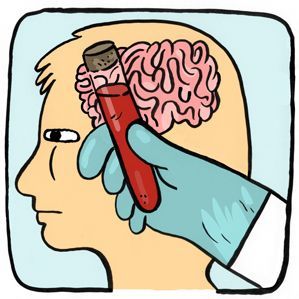
Neural Zoomer Plus: A Powerful Test for Brain Injury Recovery Still Struggling After a Brain Injury or Concussion? Many people who suffer a concussion or other brain injury continue to feel symptoms long after the initial event. Headaches, brain fog, mood swings, memory lapses, or fatigue can linger—even if your MRI or CT scan comes back “normal.” Why does this happen? Often, the answer lies in hidden brain inflammation and immune system changes that aren’t visible on regular imaging. The Neural Zoomer Plus test is a cutting-edge blood test designed to uncover these hidden issues and give patients answers they’ve been searching for. What Is the Neural Zoomer Plus Test? The Neural Zoomer Plus is a specialty blood test that screens for: Autoimmune reactions where the immune system attacks brain or nerve tissue Blood-brain barrier problems (the brain’s protective shield) Neuroinflammation that can slow recovery Markers of nerve and myelin damage Clues linking infections or viruses to brain symptoms In short: it’s an advanced brain injury test that goes beyond standard imaging and labs. Why This Test Matters After a Brain Injury Identify the “Why” Behind Lingering Symptoms Many patients ask: “Why do I still feel off after my concussion?” The Neural Zoomer Plus can provide answers by showing if inflammation or autoimmunity is at play. Guide Personalized Treatment Plans Results help doctors design care that targets your specific findings—whether through nutrition, supplements, or advanced therapies like Hyperbaric Oxygen Therapy (HBOT), laser therapy, or Extracorporeal Magneto-Transduction Therapy (EMTT). Protect Long-Term Brain Health Brain injuries can sometimes set the stage for future neurological issues. Detecting immune activity early means your care team can intervene to protect and support brain function before bigger problems arise. Symptoms That May Benefit From Testing Patients with the following symptoms after concussion or brain injury may benefit most from the Neural Zoomer Plus test: Brain fog and poor concentration Memory loss Chronic headaches or migraines Depression, irritability, or anxiety Numbness, tingling, or nerve pain Fatigue and poor sleep If these sound familiar, this test could provide the missing link. Who Should Consider Neural Zoomer Plus? Post-concussion patients with ongoing symptoms Traumatic brain injury survivors looking for deeper insights Athletes with repeated head trauma Autoimmune patients concerned about brain involvement Anyone with unexplained neurological symptoms after trauma What Patients Should Know It’s a blood test, not invasive brain imaging. It complements (not replaces) MRIs or CT scans. Results are interpreted alongside your history and exam. Why Choose Synapse Brain & Spine Center At Synapse Brain & Spine Center in Delaware, we specialize in advanced diagnostics and therapies for brain health. By combining QEEG brain mapping, RightEye testing, HBOT, neurofeedback, and specialty labs like the Neural Zoomer Plus, we create comprehensive recovery plans for our patients. Our goal is simple: help you heal faster and protect your brain long-term. Next Steps If you’ve had a concussion or brain injury and are still struggling, the Neural Zoomer Plus test may be the missing piece. 👉 Call Synapse Brain & Spine Center today to schedule a consult and learn if this advanced brain injury blood test is right for you. 302-200-7965 📍 Serving patients in Lewes, Rehoboth Beach, and the Delaware coastal region.

Back to School with Confidence: How Neurofeedback Helps Kids with ADHD & Learning Disorders As the new school year begins, many families feel a mix of excitement and stress. For children with ADHD and learning disorders, “back to school” can bring unique challenges—difficulty focusing, trouble staying organized, and struggles with memory or processing speed. These issues often lead to frustration for both kids and parents. At Synapse Brain & Spine Center, we believe every child deserves the tools to learn, grow, and thrive. That’s why we specialize in neurofeedback therapy, a safe and non-invasive way to train the brain to function more efficiently. What Is Neurofeedback? Neurofeedback uses real-time brainwave monitoring to help children improve self-regulation, focus, and emotional balance. During sessions, sensors measure brain activity and provide feedback through engaging computer games, sounds, or visual displays. Over time, the brain learns healthier patterns—much like strengthening a muscle through exercise. Why It Matters for ADHD and Learning Disorders Children with ADHD or learning differences often experience irregular brainwave activity, leading to challenges with attention, behavior, and academic performance. Neurofeedback directly addresses these underlying brain patterns rather than just managing symptoms. Research shows that neurofeedback can: Improve attention and concentration Reduce hyperactivity and impulsivity Support better emotional regulation Enhance working memory and learning capacity The Back-to-School Advantage Starting neurofeedback before or during the school year gives children an advantage: Better Classroom Focus – Staying on task and following directions becomes easier. Improved Organization – Children are better able to plan, prioritize, and complete assignments. Greater Confidence – Success in the classroom builds self-esteem and reduces frustration. Less Stress at Home – Parents notice smoother homework routines and fewer daily battles. Our Approach at Synapse At Synapse Brain & Spine Center, we begin with a QEEG brain map to understand your child’s unique brain activity. From there, we design a customized neurofeedback program that may include 10–20 sessions, depending on your child’s needs. Many families see positive changes in as little as a few weeks. Give Your Child a Strong Start This School Year If your child has ADHD or a learning disorder, don’t wait for the challenges of the school year to build up. Neurofeedback can help unlock their full potential—improving focus, behavior, and learning, all while boosting confidence. 👉 Call Synapse Brain & Spine Center today to schedule your child’s Back-to-School Neurofeedback Consultation. (302)-200-7965 or info@synapsedelaware.com
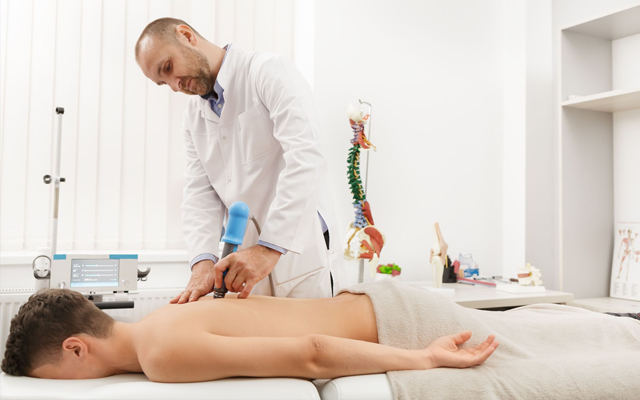
Now Offering Radial Shockwave Therapy at Synapse Brain & Spine Center! We’re excited to announce that Synapse Brain & Spine Center is now offering Radial Shockwave Therapy (RSWT)—a non-invasive, evidence-based treatment designed to accelerate healing, reduce pain, and improve mobility for patients with chronic and acute musculoskeletal conditions. 🌊 What Is Radial Shockwave Therapy? Radial Shockwave Therapy uses acoustic pressure waves delivered to the surface of the skin to stimulate healing in deeper tissues. It’s especially effective for: Plantar fasciitis and heel pain Tennis or golfer’s elbow Shoulder tendinopathy and calcifications Chronic low back or neck pain Myofascial trigger points and scar tissue Hip, knee, or joint pain following injury This therapy is widely used by sports medicine specialists, orthopedists, and neurologically focused practices like ours—and for good reason. RSWT helps stimulate tissue regeneration, improve blood flow, and reduce pain by targeting dysfunctional neuromuscular patterns and promoting cellular repair. ✅ Why We’ve Added RSWT to Our Care Model At Synapse, our goal is to provide cutting-edge, drug-free solutions for chronic pain, neurological dysfunction, and injury recovery. Radial Shockwave Therapy fits perfectly into our integrative model alongside: Hyperbaric Oxygen Therapy Neurofeedback Therapy Class IV Laser Therapy Extracorporeal Magnetotransduction Therapy (EMTT) Chiropractic Neurological Rehabilitation By combining RSWT with these therapies, we’re seeing enhanced outcomes in patients dealing with long-standing inflammation, post-concussive symptoms, neuropathy, and orthopedic injuries. 💡 What to Expect Quick treatment: Most sessions take 10–15 minutes. Non-invasive: No anesthesia or downtime required. Evidence-based: Backed by research for soft tissue and tendon injuries. Custom-tailored: Integrated into your personalized care plan. Whether you're recovering from an auto injury, dealing with repetitive stress, or managing nerve-related muscle tightness, RSWT can be an effective and efficient addition to your recovery journey. 📅 Schedule Your Consultation Ready to explore whether Radial Shockwave Therapy is right for you? 📍 Visit us at Synapse Brain & Spine Center in Lewes, DE 📞 Call (302) 703-6998 or book online at www.synapsedelaware.com Our team is here to help you move better, heal faster, and get back to living pain-free.
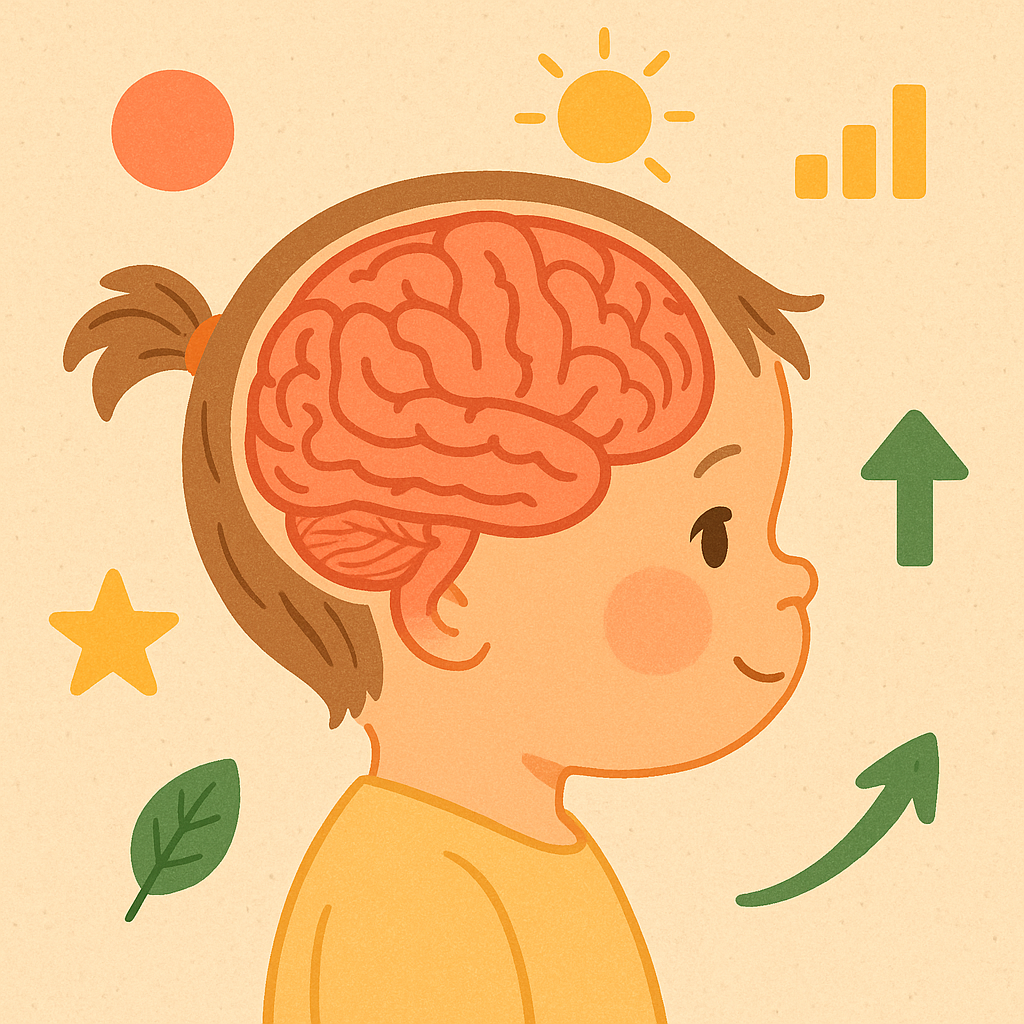
From the moment a child is born, their brain begins a rapid-fire developmental journey that’s nothing short of astonishing. Nowhere is this more evident than in toddlerhood—the crucial stage between ages 1 and 3—when the brain is forming connections at a pace that shapes a lifetime of learning, emotional regulation, and behavior. 🧠 How Many Neurons Are Made Per Day? By the time a baby is born, their brain already contains about 100 billion neurons—roughly the same number as an adult brain. But what truly sets the toddler brain apart isn’t the number of neurons being created daily, but the explosive rate at which connections between neurons—called synapses—are formed. At peak growth, a toddler’s brain forms up to 1 million new neural connections every second. That adds up to over 86 billion connections per day—more than any other time in life. This remarkable process, known as synaptogenesis, allows toddlers to absorb language, movement, emotion, and social cues with incredible speed. 🧬 What’s Happening in the Brain? During toddlerhood: Synaptic density skyrockets: The toddler brain has about twice as many synapses as the adult brain. Pruning begins: As the child interacts with the world, the brain keeps the most useful connections and eliminates the rest—a process that sharpens efficiency. Myelination increases: Nerve fibers are coated with a fatty layer (myelin) to speed up communication between neurons. These changes support everything from walking and talking to tantrums and problem-solving. 🔍 Why Early Experiences Matter This is why the early years are often called the “critical window” of brain development. The brain is incredibly plastic—meaning it adapts to experiences. The right stimulation can strengthen essential brain circuits. Nutrition, sleep, emotional bonding, and sensory experiences all impact the toddler’s neurological foundation. Stressful or neglected environments can hinder this growth, whereas enriching environments promote lifelong cognitive and emotional resilience. 🛠️ How We Support Growing Brains at Synapse Brain & Spine Center At Synapse, we believe in optimizing brain development—not just for toddlers, but across all ages. Our therapies like: Neurofeedback, Hyperbaric Oxygen Therapy, and Neurologically Based Chiropractic Care, …help restore and support healthy brain function in kids who may be struggling with developmental delays, sensory processing, ADHD, or emotional regulation challenges. 💡 Final Thoughts A toddler’s brain is an engine of growth, forming millions of connections daily. It’s a magical—and vulnerable—time. Whether you’re a parent, caregiver, or clinician, knowing how to support this journey is key. Want to learn how we can help your child thrive? 📞 Contact Synapse Brain & Spine Center today (302)-200-7965 or visit www.synapsedelaware.com
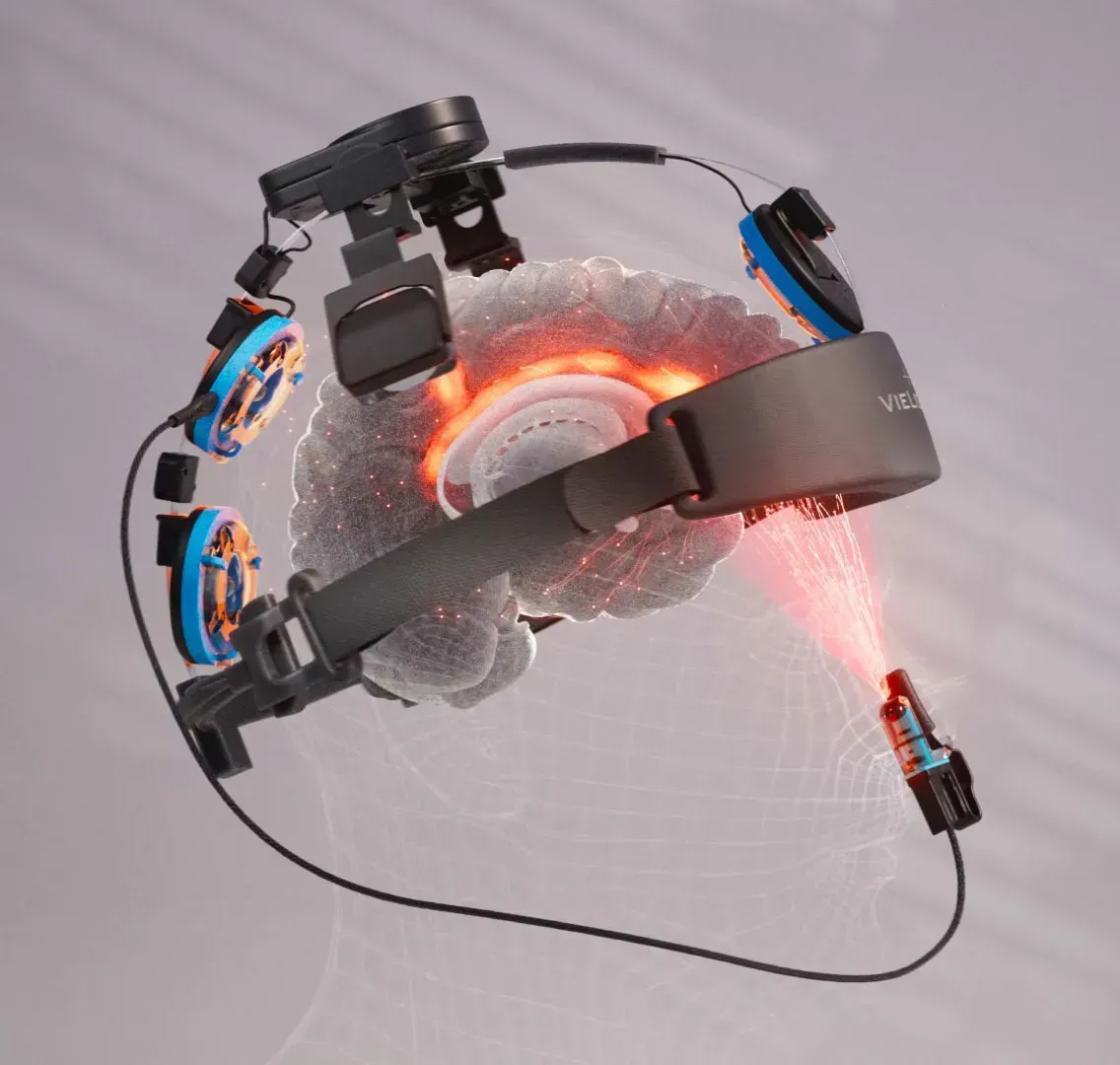
What Is Transcranial Photobiomodulation — and How Is It Changing Brain Rehabilitation? In recent years, brain rehabilitation has undergone a quiet revolution — and one of the most promising innovations is transcranial photobiomodulation (tPBM), also known as “brain laser therapy.” At Synapse Brain & Spine Center, we are proud to incorporate this cutting-edge, non-invasive therapy into our comprehensive neurological care model. But what exactly is it, and why is it making such an impact? Understanding Transcranial Photobiomodulation Transcranial photobiomodulation involves applying low-level red and near-infrared (NIR) light to specific regions of the scalp using specialized laser or LED devices. These wavelengths are carefully chosen to penetrate the skull and reach the underlying brain tissue, where they stimulate cellular function — especially in the mitochondria, the "powerhouse" of your cells. When targeted light energy is absorbed by the brain, it can trigger a chain of beneficial biological responses: Increased cellular energy (ATP) production Improved blood flow and oxygen delivery Reduced inflammation and oxidative stress Enhanced neuroplasticity (the brain’s ability to rewire and heal) These effects make tPBM a powerful tool for improving cognitive function, emotional regulation, and neurological recovery. The Science Behind the Therapy Clinical studies and brain imaging research have shown that tPBM can lead to measurable improvements in brain metabolism, connectivity, and function. Functional MRI (fMRI) and EEG studies have demonstrated enhanced connectivity in networks related to attention, mood, and memory after tPBM therapy. It’s being studied for a wide range of conditions, including: Concussions and post-concussion syndrome Anxiety and depression Cognitive decline and early-stage dementia PTSD and trauma-related brain dysfunction Brain fog and fatigue from chronic illness or toxic exposure Why This Matters in Brain Rehabilitation Traditional brain rehabilitation often relies on cognitive therapy, medications, or neurofeedback alone. While each has its place, tPBM offers a direct way to support brain healing at the cellular level, especially in areas affected by injury, inflammation, or poor perfusion. At Synapse, we combine tPBM with other therapies like QEEG-guided neurofeedback, cognitive therapy, and hyperbaric oxygen therapy for a synergistic effect. This integrated approach allows us to support the brain’s healing from multiple angles — not just managing symptoms, but improving function and restoring quality of life. What to Expect During a tPBM Session Sessions are safe, painless, and typically last between 10 to 20 minutes. Patients simply relax while the light is applied to specific regions of the head based on their clinical evaluation and brain map results. Many report feeling calmer, clearer, or more alert within hours or days of treatment. Because tPBM doesn’t involve medication or surgery, it’s well-tolerated and has minimal side effects — making it an ideal option for patients seeking natural, research-backed solutions. Is It Right for You? If you’re struggling with lingering brain symptoms — whether from injury, stress, chronic illness, or aging — transcranial photobiomodulation may be a game-changer in your recovery. To find out if tPBM is right for you, schedule a $249 New Patient Consult at Synapse Brain & Spine Center, which includes a comprehensive neurological evaluation and QEEG brain mapping to guide your personalized care plan. Ready to Experience What Brain Laser Therapy Can Do? 📞 Call us today or schedule online to begin your journey toward better brain health.Transcranial photobiomodulation involves applying low-level red and near-infrared (NIR) light to specific regions of the scalp using specialized laser or LED devices. These wavelengths are carefully chosen to penetrate the skull and reach the underlying brain tissue, where they stimulate cellular function — especially in the mitochondria, the "powerhouse" of your cells. Synapse Brain & Spine Center located in Lewes Delaware offering Transcranial Photobiomodulation (Brain Laser Therapy) Call 302-200-7965 to learn more!
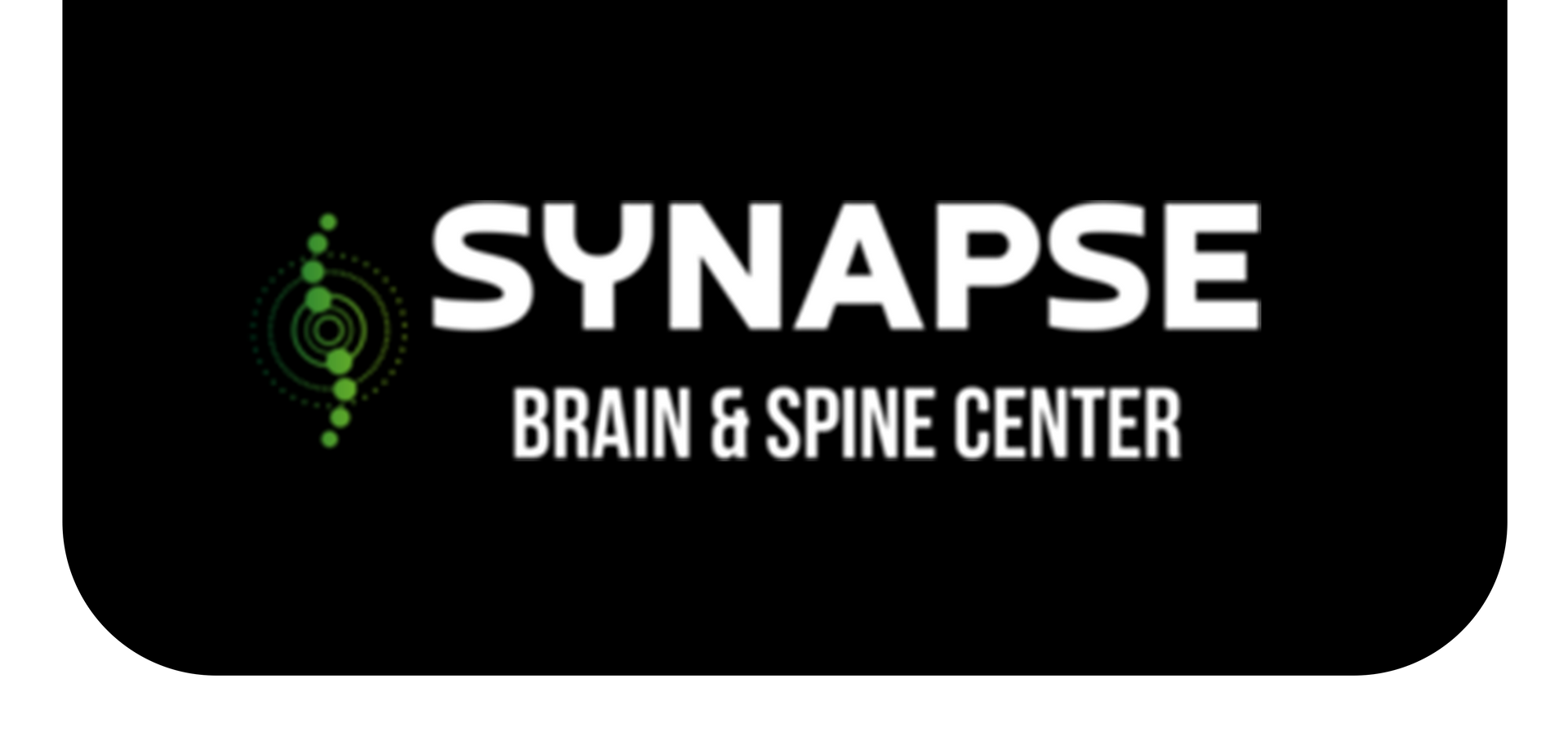

Share On: